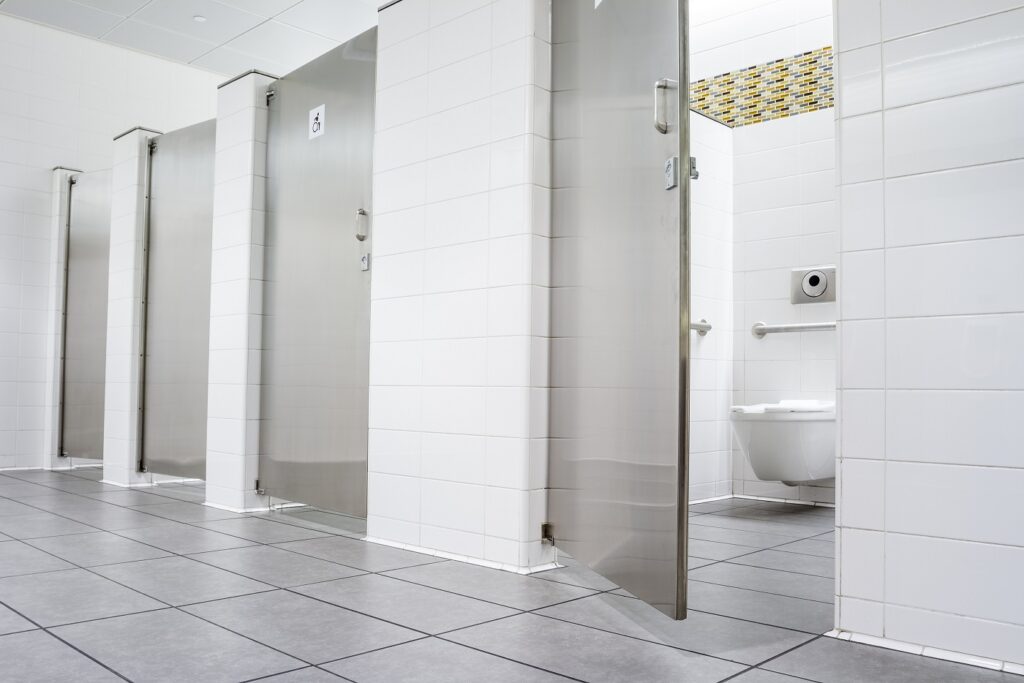With COVID-19, Tuberculosis and Hepatitis on the rise, along with many other viruses and bacteria, restroom sanitization and disinfecting has become a critical part of facility maintenance. Because these diseases are commonly spread through public restrooms, special attention must be given in order to decrease loss of employee productivity. Maintaining cleanliness and hygiene in restrooms is not only crucial for the health and well-being of employees, customers, and visitors but also contributes to a positive image for your business.
Just Because it LOOKS clean doesn’t mean it IS clean!
Sanitization and disinfection are both critical steps in cleaning and preventing the spread of germs. It’s important to know the difference.
Sanitization is the process of reducing the number of germs on a surface to a safe level. This is done by using a chemical sanitizer. Sanitization does not kill all germs, but it does reduce the number to a level that is unlikely to cause illness.
Disinfection is the process of killing all germs on a surface. This is accomplished using a chemical disinfectant.
In general, sanitization is sufficient for most cleaning tasks. However, disinfection is necessary when there is a high risk of infection.
The problem with using disinfecting cleaners is they usually require a 10-minute dwell time on a pre-cleaned surface to achieve their disinfecting claims. To overcome this time requirement, ImageOne cleans the restroom with a sanitizing cleaner then sprays all disease transfer points with a disinfectant spray that remains on the surface. This insures that we have done our part in protecting the health of everyone who visits your facility.
Here are the basic steps used in sanitizing and disinfecting the restroom:
- Regular Cleaning: Restrooms should undergo regular cleaning to remove dirt, grime, and surface contaminants on sinks, mirrors, countertops and partitions. Cleaning the toilet includes the bowl, seat and lid. Regular cleaning also includes sweeping, mopping, and emptying trash receptacles.
- Sanitization: Sanitization involves reducing the number of bacteria, viruses, and other harmful microorganisms to a safe level. It typically involves using sanitizing agents that are effective against a broad spectrum of pathogens.
- Disinfection: Disinfection goes a step further than sanitization. It involves using specific disinfectants that kill or inactivate a broader range of microorganisms, including viruses and bacteria.
- High-Touch Areas: Certain surfaces in restrooms, such as door handles, faucet handles, toilet flush levers, soap dispensers, and paper towel dispensers require special attention. These areas can harbor a high concentration of germs and require regular disinfection.
Restroom sanitization and disinfecting are both critical aspects of maintaining a safe business environment. It is also important to prevent the spread of germs and keep people healthy. At ImageOne Janitorial, we have systems and processes in place to ensure your facility is clean and sanitized each and every time.


